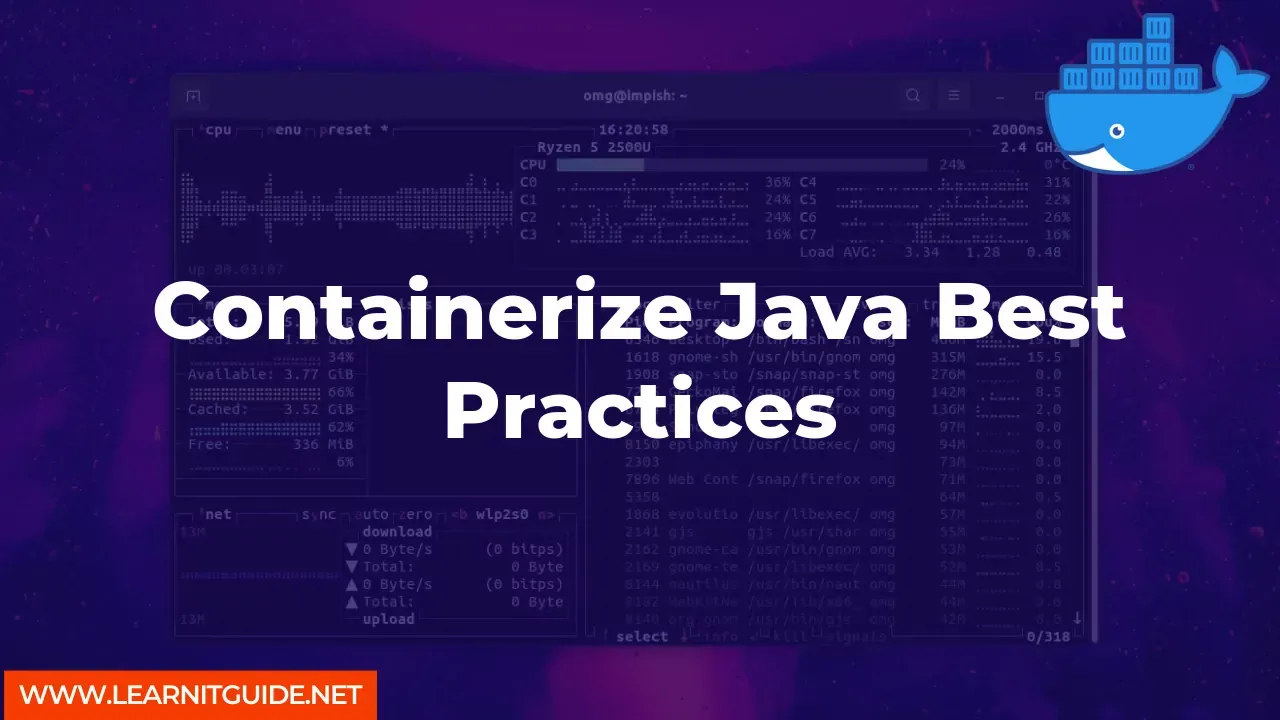Containerization has become a popular way of deploying and scaling applications, especially in cloud environments. Containers allow developers to package their applications with all the necessary dependencies and configurations, making it easier to deploy and manage. In this article, we will discuss the best practices for containerizing Java applications.
Table of Contents
Choose a lightweight base image
Use environment variables for configuration
Keep the container image small
Run only one process per container
Use a health check to monitor the container
Use a reverse proxy to expose the application
Use a container orchestration tool
Choose a lightweight base image
Choosing a lightweight base image is crucial when containerizing Java applications. It helps to keep the container image small and reduces the attack surface. Some popular base images for Java applications include Alpine Linux and OpenJDK.
Command:
docker pull openjdk:11-jre-alpine
- Use environment variables for configuration
Using environment variables for configuration allows you to keep your configuration separate from your application code. It makes it easier to update configurations without redeploying the container. You can also use environment variables to store sensitive information like passwords and API keys.
Command:
docker run -e DB_USERNAME=admin -e DB_PASSWORD=pass1234 my-app:latest
- Keep the container image small
Keeping the container image small is essential for efficient deployment and scaling. You can use multi-stage builds to reduce the size of your container image. Multi-stage builds allow you to build your application in one stage and copy only the necessary files to the final image.
Command:
FROM maven:3.8.3-openjdk-17-slim AS build
COPY src /usr/src/app/src
COPY pom.xml /usr/src/app
RUN mvn -f /usr/src/app/pom.xml clean package
FROM openjdk:11-jre-slim
COPY --from=build /usr/src/app/target/my-app.jar /usr/app/my-app.jar
CMD ["java", "-jar", "/usr/app/my-app.jar"]
- Run only one process per container
Running only one process per container ensures that each container does one thing and does it well. It also makes it easier to scale your application horizontally.
Command:
docker run -d --name=my-app -p 8080:8080 my-app:latest
- Use a health check to monitor the container
Using a health check to monitor the container ensures that the container is running correctly. A health check can be a simple HTTP request or a more complex script that checks the application's internal state.
Command:
HEALTHCHECK --interval=30s --timeout=5s CMD curl --fail http://localhost:8080/health || exit 1
- Use a reverse proxy to expose the application
Using a reverse proxy to expose the application allows you to add additional functionality like SSL termination, load balancing, and rate limiting. Popular reverse proxies for containerized applications include NGINX and HAProxy.
Command:
docker run -d --name=proxy -p 80:80 -p 443:443 -v /path/to/certs:/etc/nginx/certs nginx
- Use a container orchestration tool
Using a container orchestration tool like Kubernetes or Docker Swarm makes it easier to deploy, manage, and scale your containerized application. These tools provide features like automatic load balancing, service discovery, and self-healing.
Command:
kubectl apply -f deployment.yaml
Containerizing Java applications is an efficient way to deploy and manage applications in the cloud. By following these best practices, you can ensure that your containerized application is secure, scalable, and easy to manage.
Related Searches and Questions asked:
That's it for this post. Keep practicing and have fun. Leave your comments if any.








0 تعليقات